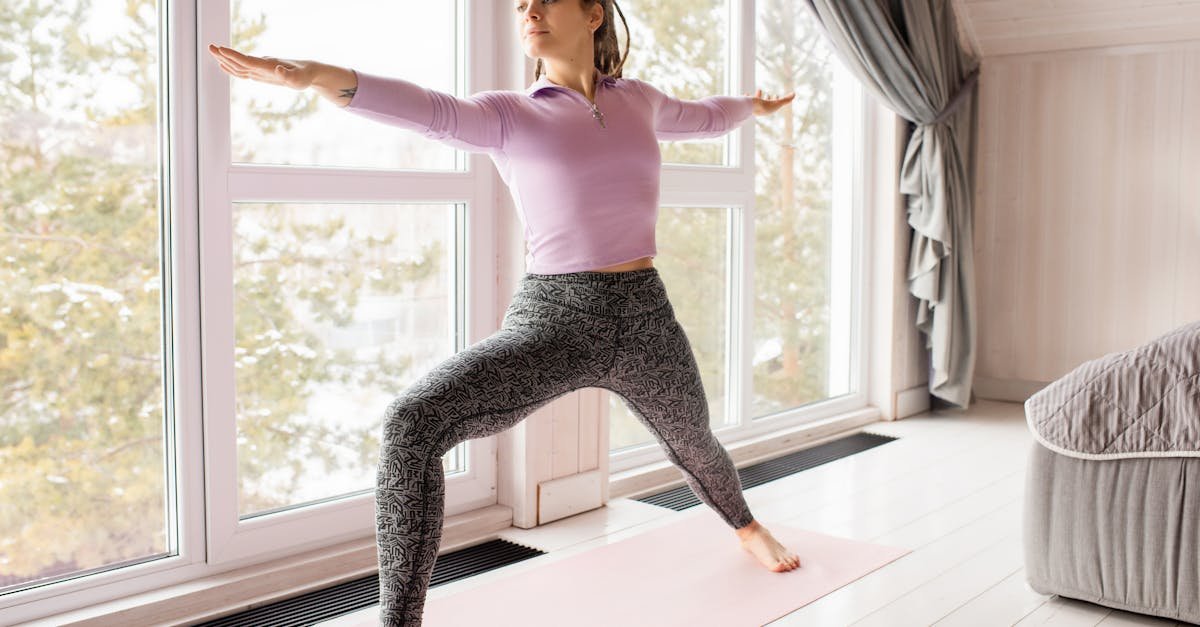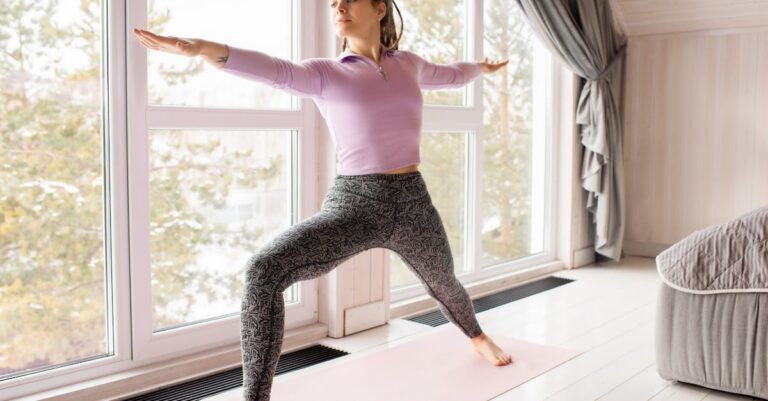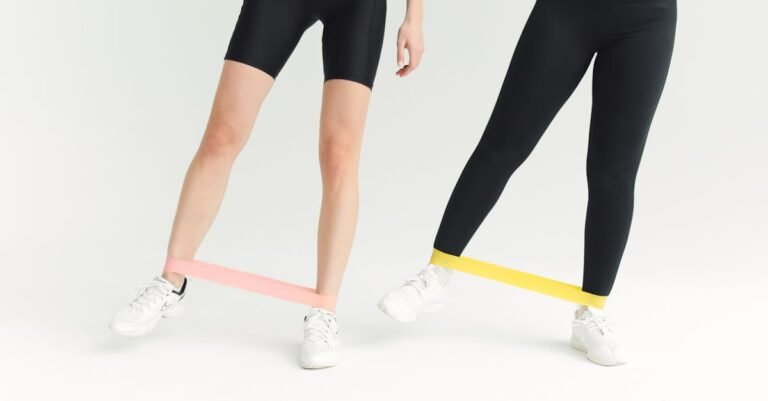Ever feel like you should be working out more, but juggling separate days for strength and stretching just feels impossible? Maybe you finish a strength session feeling strong but kinda stiff, or you stretch but still feel like you could use more power getting up off the couch. You want to feel good in your body – strong enough for everyday stuff, flexible enough to move without creaking – but finding the time and energy, especially at home, is a real puzzle. Sound familiar? Well, you’re in the right place! We’re gonna explore how combining strength and flexibility into one routine can be your secret weapon. Get ready to learn why it works, how to set it up at home, and some simple moves to get you started. The payoff? Feeling stronger, moving better, and less workout stress!
Why Bother Combining Strength and Flexibility?
Okay, so why mix these two things up? Isn’t it better to focus on one thing at a time? Not always! Think about it like building with LEGOs. You need strong bricks (that’s your strength) to build something cool, right? But you also need those special hinge pieces (that’s your flexibility) so you can actually move parts of your creation, like opening a door on your LEGO house.
Your body’s kinda the same. Strength gives you the power to do things – lift groceries, climb stairs, play with your dog. Flexibility gives you the range of motion to do those things well and safely. Strong muscles actually help protect your joints when you stretch, preventing you from going too far. And being more flexible can help you use better form during strength exercises. For example, if your hips are tight, doing a good squat is tough. Loosen up those hips, and suddenly your squat feels stronger and safer.
Plus, let’s be real: combining them saves time! Instead of two separate workouts, you get the benefits of both in one go. It’s efficient and helps create a really well-rounded fitness level, making you feel more capable all around.
Getting Started: What You Need (Spoiler: Not Much!)
Good news! You don’t need a fancy home gym or expensive gear to get started with a strength and flexibility combo. Seriously, the most important tool is your own body.
Your main workout gear will be you. Bodyweight exercises are awesome for building strength without needing dumbbells or machines. Think push-ups, squats, lunges – we’ll get into those more later. For flexibility, again, it’s mostly just you and some floor space.
What about extras? A comfy surface helps, so a yoga mat or even just a rug is great, especially for floor exercises and stretches. If you want to add a little extra challenge down the line, resistance bands are cheap and super versatile. A sturdy chair can also be handy for support during some moves or for modified exercises.
The biggest thing you need? A little bit of space. Enough room to lie down and swing your arms and legs around without knocking over a lamp. That’s it! Think about it: maybe you just need to slide the coffee table over in your living room for 20 minutes. Totally doable, right?
Building Your Strength Base at Home
Alright, let’s talk strength. We’re not aiming for bodybuilder muscles here (unless you want to!), but building practical strength that helps in daily life. The best way to do this efficiently at home is with exercises that work multiple muscle groups at once. These are often called compound exercises.
Here are a few simple but super effective ones:
- Squats: These work your legs and glutes (your butt muscles). Stand with feet shoulder-width apart, sit back like you’re aiming for a chair behind you, keeping your chest up. Go as low as feels comfortable. Real-life win: Makes getting up from chairs, cars, or even the floor way easier.
- Push-ups: Great for chest, shoulders, and triceps. Can’t do a full one? No problem! Start on your knees, or even standing up and pushing against a wall. The idea is to lower your chest towards the floor/wall and push back up. Real-life win: Helps with pushing open heavy doors or lifting yourself up.
- Lunges: These target your legs one at a time, great for balance too. Step forward with one leg, lowering your hips until both knees are bent at about a 90-degree angle. Keep your front knee over your ankle. Push back up and switch legs. Real-life win: Awesome for climbing stairs or stepping over obstacles.
- Plank: This works your core (abs and back) like crazy. Hold yourself up on your forearms and toes (or knees), keeping your body in a straight line from head to heels. Don’t let your hips sag! Real-life win: A strong core helps with posture and protects your back.
Start with a number of repetitions that feels challenging but doable, maybe 8-12 reps for a couple of sets. Focus on good form over speed or quantity.
Weaving in Flexibility: It’s Not Just About Touching Your Toes
Flexibility isn’t just about being able to pretzel yourself; it’s about having a good range of motion in your joints so you can move freely and comfortably. Think less circus performer, more feeling loose and limber after sitting for a while.
There are two main ways to stretch we can weave into our routine:
- Dynamic Stretching: These are moving stretches. Think arm circles, leg swings, torso twists. They’re great to do before your strength exercises or even between sets. They warm up your muscles and get your joints ready for action. It’s like revving up your car engine gently before you drive off.
- Static Stretching: This is the “hold” type of stretch you probably think of first. You gently stretch a muscle to the point of mild tension (no pain!) and hold it for maybe 15-30 seconds. These are best done after your strength workout when your muscles are warm. Think hamstring stretches, quad stretches, chest openers. This is like letting your car engine cool down properly after a drive.
Some easy static stretches to try after your strength moves:
- Hamstring Stretch: Sit on the floor with one leg straight, the other bent. Gently lean forward towards your straight foot.
- Chest Opener: Stand in a doorway, place your forearms on the frame, and gently step forward until you feel a stretch across your chest. Feels so good after push-ups or hunching over a screen!
- Quad Stretch: Stand, holding onto a wall or chair for balance if needed. Grab one ankle and gently pull your heel towards your glutes, keeping your knees close together.
Remember, flexibility improves over time. Be patient and gentle with yourself!
Putting It Together: Sample Combo Moves
Okay, theory’s great, but how does this actually look in a workout? You can either do strength moves followed by static stretches at the end, or you can get creative and combine them into single, flowing movements. This is where it gets really efficient!
Let’s imagine a few combo moves:
- Squat with Overhead Reach: Perform a regular bodyweight squat. As you stand back up, reach your arms straight overhead, maybe even coming up onto your toes for a calf raise. You get the squat strength work, plus a nice stretch through your shoulders and lats (sides of your back), and a little calf work. Strength + Flexibility in one!
- Lunge with Torso Twist: Step into a lunge. Once you’re stable, gently twist your upper body towards your front leg. Twist back to the center before pushing back up. This adds core work and a spinal mobility challenge (flexibility) to your lunge (strength). Make sure the twist comes from your waist, not just your arms.
- Plank with Hip Mobility: Start in a plank position (on hands or forearms). Slowly bring one knee towards the outside of your elbow on the same side, like a little spider crawl. Return to plank and switch sides. This keeps the core strength challenge of the plank but adds hip flexibility work.
Think about flowing smoothly between the strength part and the flexibility part of the move. You could create a short routine using just these combo moves, maybe doing 8-10 reps of each for 2-3 rounds. Imagine someone like, let’s call her Maya, who used to dread separate workouts. Now, she does a quick circuit of these combo moves during her lunch break. She feels like she’s getting stronger and working out the kinks at the same time, all in under 20 minutes. It’s just an example, but it shows how doable it can be!
Listening to Your Body & Making it Stick
This is maybe the most important part. Your body is unique, and what works for someone else might not be perfect for you. The key is to pay attention to how things feel.
No pain, all gain? Nope! A little muscle soreness after trying something new is normal (“Hey, I worked those muscles!”). But sharp, stabbing, or joint pain is your body’s way of saying “Hold up!”. If something hurts, stop. Try modifying the exercise – maybe don’t squat as deep, or do push-ups against the wall instead of the floor. There’s always a way to adjust.
Consistency beats intensity, especially when you’re starting out. It’s way better to do a short, 15-minute routine three times a week than to go all out for an hour once and then be too sore or burnt out to do anything else. Start small and build gradually. Think progress, not perfection.
How do you make it a habit? Try scheduling it. Put it in your calendar like any other appointment. Maybe it’s first thing in the morning, during your lunch break, or while watching your favorite show in the evening. Find a time that works for you. Put on some music you love! Making it enjoyable makes it much more likely you’ll stick with it. And remember, some days you’ll have more energy than others. That’s totally okay. Just do what you can on that day.
So, there you have it! Combining strength and flexibility isn’t some complicated fitness secret; it’s a practical, efficient way to take care of your body right in your own home. We’ve seen why mixing them makes sense – they really do help each other out, making you stronger and more mobile. You don’t need fancy equipment, just a little space and your own body. By using compound strength moves like squats and planks, and weaving in dynamic and static stretches, you create a balanced routine. Trying out combo moves can make it even more time-saving and fun. Remember to listen to your body, start slow, and focus on being consistent. The goal is to feel better, move easier, and enjoy the process. You’ve got this!










